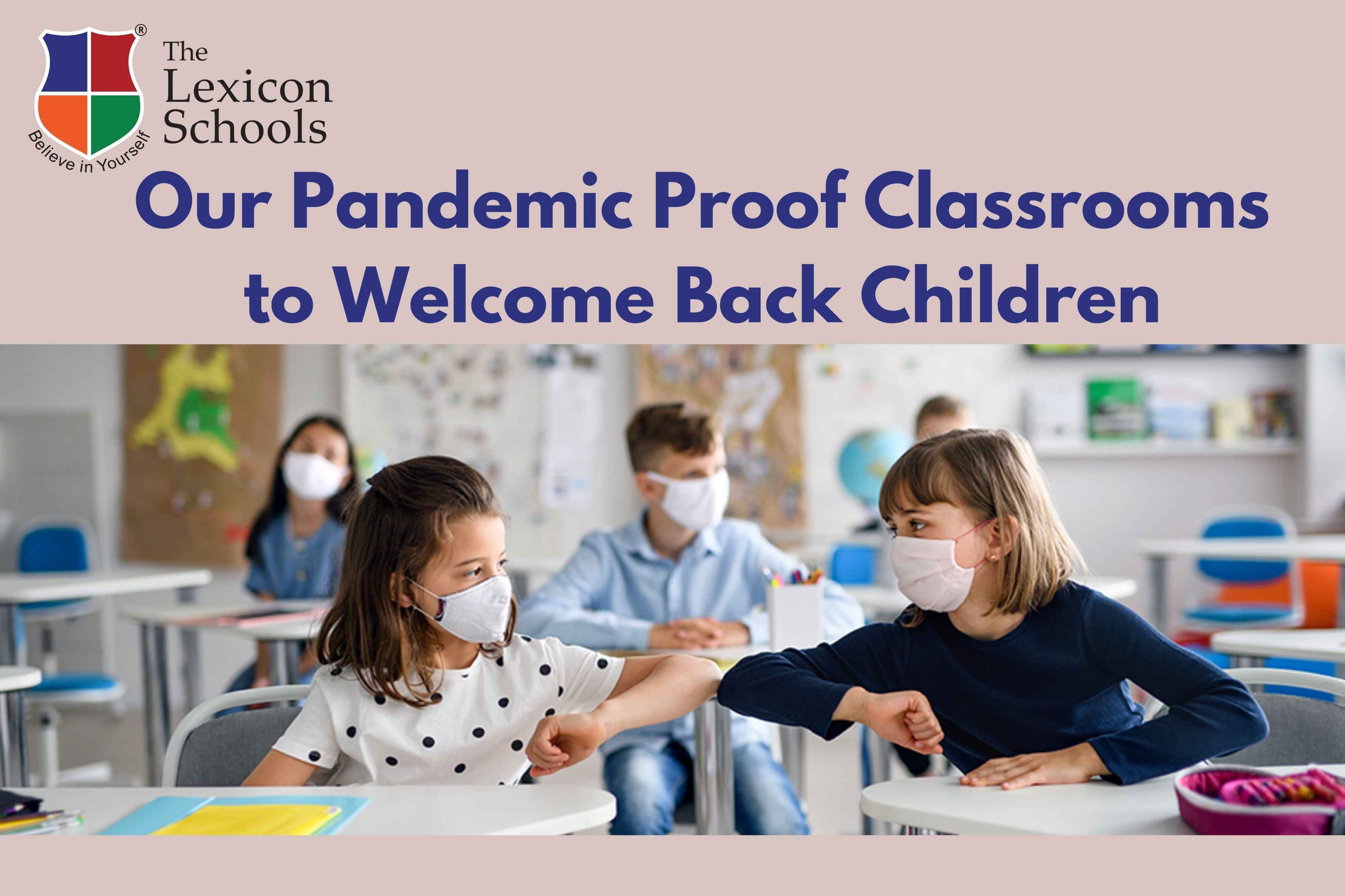Our Pandemic Proof Classrooms to Welcome Back Children
An integrated approach to education - that carves students’ learning, social and emotional needs - is crucial, especially in times of plight. School closures related to the current pandemic mean that students from diverse backgrounds who are more at risk of increased susceptibility are less likely to receive the support and services they need, and the gap between students who experience additional barriers and those who do not, might widen. Discontinuance of schools can also have considerable effects on students’ sense of belonging to schools and their feelings of self-worth - which are key factors for inclusion in education.
Students around the world have kept their learning going, with zeal. With the support of their dedicated teachers and parents, they have continued with their lessons even under difficult circumstances.
However, when schools reopen, many children will need extra support to catch up with their learning. The schools must plan for bridge courses and curative lessons to help bring students back on track. It might include starting the school with remedial or refresher courses, after-school programs or supplemental assignments to be done at home. With the probability that many schools may not open full-time or for all grades, schools may implement ‘blended learning’ models, a mix of traditional face-to-face teaching and online mode. The children should be given extra support at home by creating a routine around school and schoolwork that might help them feel relaxed and more focused.
To keep schools open, teachers need to be protected
from the transmission of Covid-19 in the community.
Therefore, teachers should be encouraged and
prioritized, to get vaccinated against covid-19 once
frontline health personnel and high-risk populations
are vaccinated.
As schools reopen, precautions must be taken to
prevent the spread of Covid-19. The students, who are
returning to school from households where they might
have heard false information about Covid-19, need to
be educated on the facts.
The first important step in establishing classroom procedures and protocols is to understand Covid-19, how it spreads and how we can protect ourselves. The students need to understand the rules in order for them to follow. The management should keep an open ear to their concerns and ideas and answer their questions in an age-appropriate manner. The different reactions that they may experience should be discussed and explained; these are normal reactions to an abnormal situation.
It can be helpful to create a list of Do’s and Don’ts with the students, to encourage them to stick to the Covid norms. There should be proper planning on how desks will be arranged; how students will greet each other; physical distancing measures during lunch breaks (who they will sit with/ play with during breaks, how they can schedule time with all of their friends across the week) etc.
Some practical activities should be taken to demonstrate good hygiene practices to the students. For example: have students draw hygiene posters for the classroom or create a hand hygiene song to sing with the students.







